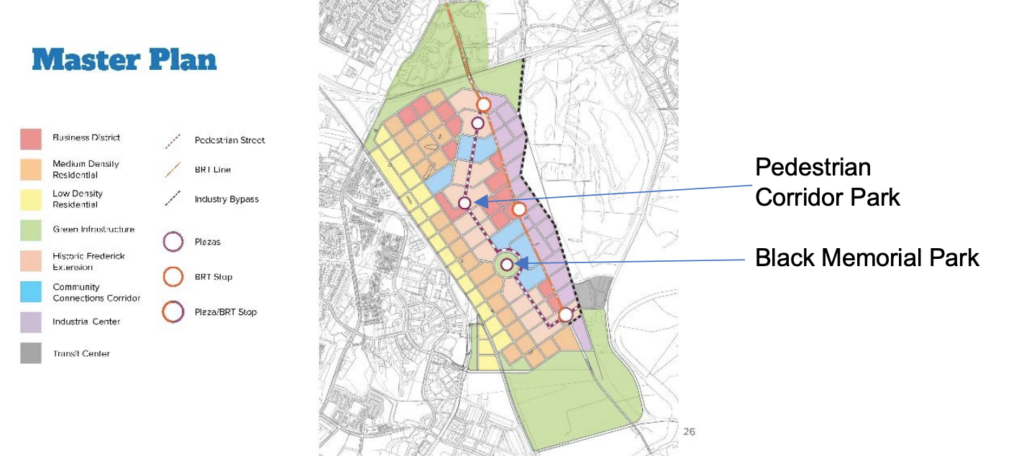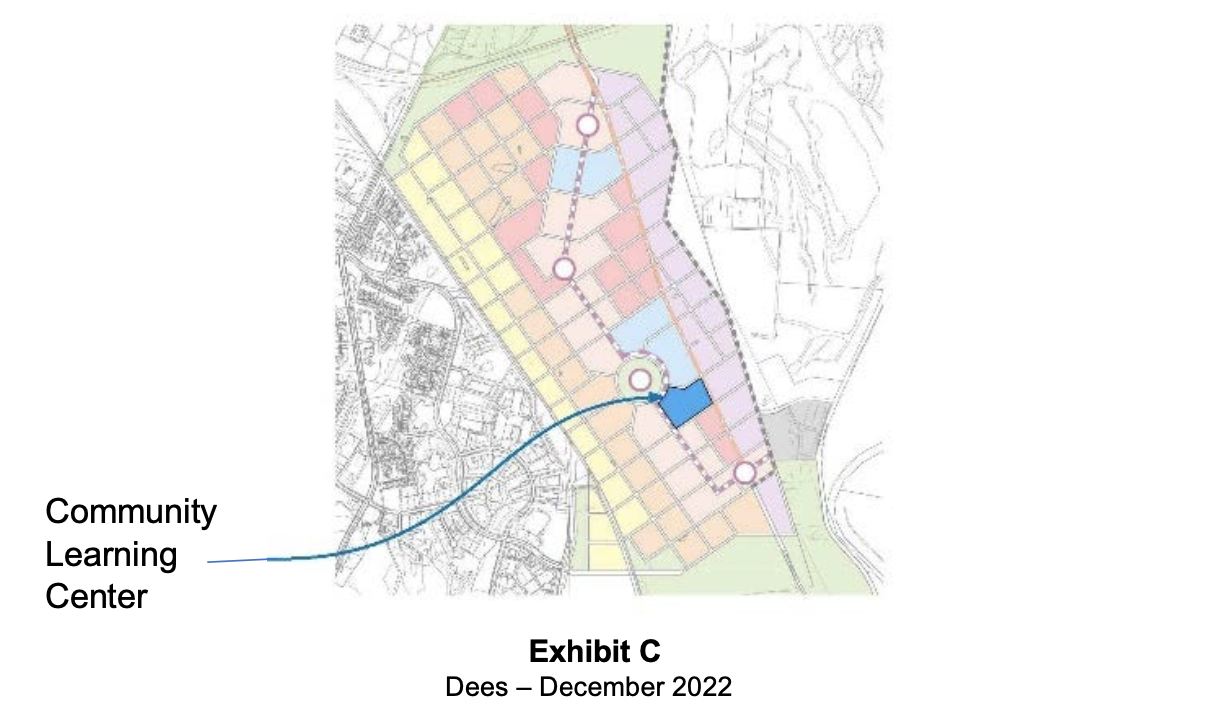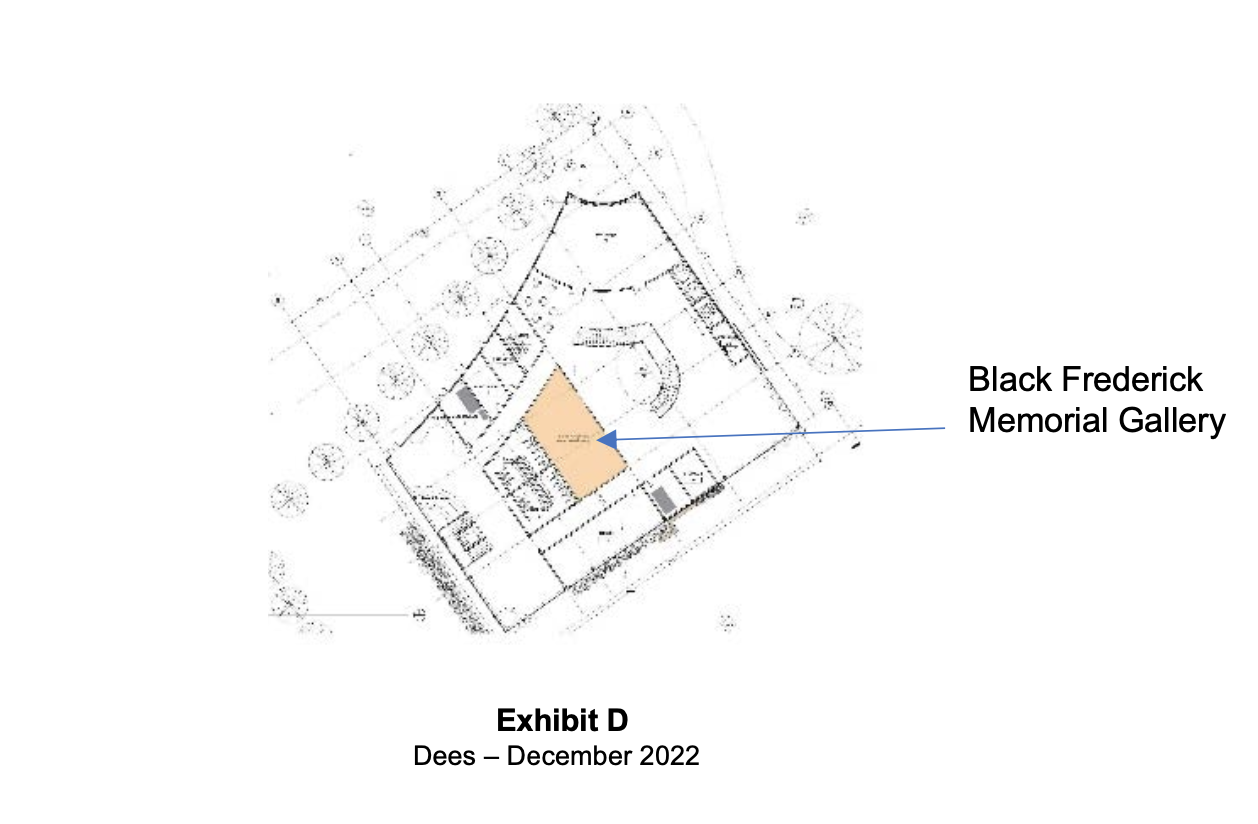John A. Ferri
Overview
Pope Francis put in words what the world felt from the pandemic. “The greatest lesson we learned from Covid-19 was the realization that we all need one another… and that none of us can be saved alone.”1
Urban Planning has pivoted from transportation focused to pedestrian place-making. Emphasis is placed on human interaction. Neighborhoods will be transformed by post-pandemic lessons and technological advances. Planning must incorporate critical resources for all stages of life.
The Howard University Urban Design Studio produced a Master Plan with a design that incorporated knowledge gained from the pandemic while employing a foundation of culture, nature, and sacred spaces. The placement of resources within a compact vicinity connects the community and provides life balance and vitality.
Knowledge Gained
AARP listed four pandemic outcomes2:
- The populace has befriended technology.
- Work can be anywhere, when the world gets small, nature lives large.
- Wealth inequality has grown.
- Loneliness affects family matters.
The need for social interaction has caused a renaissance in urban planning. Focus now is on Placemaking. Before the pandemic, focus was on prioritizing transportation over pedestrian activity. Reliance on the automobile was and still is the basis for daily decisions. Pre-pandemic planning produced neighborhoods in name only. Lost were the close traditions and cultural ceremonies. The recognition of the human life cycle was diminished.
Strong Town’s Tiffany Reed writes “Definition of a successful city has emphasized connecting… the private sphere of homes to the sphere of work…. These spheres are necessary, but they are not sufficient. As social beings, we need spaces in our neighborhoods that remind us of what matters most: not the transactions that shape our lives, but our connections and relationships with the people around us.”3 The importance of family and cultural interactions have produced an emphasis on creating a community with balanced life cycles. “Each community must find ways of taking stock of its own relative “balance” in this respect, and then define a growth process which will move it in the right direction.”4
Post-Pandemic World in 2050
Architects-Planners must also address the befriending of technology. Quantumrun Foresight, a technology-based research firm’s short-range model predicts “The world in 2040 will have artificial intelligence (AI) perform tasks that diagnose patients, recommend medical care, drive cars, perform managerial functions, and give legal & financial counsel.”5 Business Insider Newsletter adds computer tech, media, and teachers.6
Harvard Business Review adds the design profession will not be immune from AI as programs become available to disrupt graphics and design.7 While being interviewed by Michael J. Crosbie in Common Edge, Dr. Ihmat As, Professor of Architecture, discusses how Architects and Planners can benefit from AI to “decipher patterns … that architects have intuitively or intentionally created over the years. Think of Christopher Alexander’s A Pattern Language, which compiled various patterns in the way we design… AI could potentially expand such patterns to … shape the built environment.”8
Quantumrun Foresight’s long-range model predicts “2050 will see AI become mainstream as computers will learn and problem solve on their own. Automation will be the new outsourcing. Consumer goods will be by the Internet of Things (IoT). Showrooms will not have inventory. Home delivery will be by drone.”9
The need for certain professional degrees will not be as important as problem solving talents. 2050 will be the last generation of jobs for mass employment. Most of the labor workforce will be on an “on-call” basis. A Goldman Sachs study found that AI could impact 300 million full-time jobs worldwide.10
Through the upheaval and paradigm shift of the continued technology revolution, human development through the stages of life cycle remains constant, as it is based in natural order. This revolution will disrupt social interaction. Architects-Planners can provide greater value to a project by emphasizing a connection of life’s timeless relationships. The communion of life’s intergenerational interactions should be paramount in planning. A plan’s design philosophy should include the connections of passing down wisdom (Intergenerational), role models (reinforcing parents – children quality time), mentoring (decentralized teaching), work (improvement resources), recreation (includes nature) and spiritual (Interdenominational).
The future of the Post-Pandemic AI world needs a social connecting infrastructure where no one feels abandoned, has individual purpose, and humility. Georgetown University professor Jamie Kravolec notes “When St. Ignatius of Loyola founded the Society of Jesus, he went to Rome and based it there. Some of the first apostolic works of the order were urban ministries such as caring for the poor. The city became the platform for a spirituality that is about finding God in all things. The church’s ministries are located and the church’s work on issues related to homelessness, immigration, employment, and health, both mental and physical, are in urban areas. We find God in the majesty of buildings and public spaces, but we also find God in persons and communities that are struggling.” 11 A community that incorporates and connects social and supportive resources establishes a community in balance.
Howard University Urban Design Studio
Students developed a 2050 Master Plan for a commercial sector in Frederick County, Maryland. The post-pandemic lesson of connecting human engagement was a suggested requirement. The Livable Frederick Master Plan (LFMP) and County Ordinances were used as references.
Livability is the sum of factors that add up to our quality of life. LFMP embraces planning that is centered on creating and sustaining Livability. It takes a concept from a vague notion to a vivid illustration to create and sustain the community’s Livability in the years 2040-2050. To define the Vision, the community submitted 2,223 surveys and 15,000 qualitative comments from both residents and business owners. The result is one overarching Vision Statement: “Frederick County is a vibrant and unique community where people live, work, and thrive while enjoying a strong sense of place and belonging.”12
The Vision statement was not developed by referencing zoning maps. The result reinforces a timeless way of building. “It is so fundamental that with its help you can make any building in the world as beautiful as any place that you have ever seen. It is so powerful, that with its help thousands of people together can create a town, which is alive, and vibrant.”13
LFMP further defines 4 distinct Vision Themes: Community, Health, Economy, and Environment. The Action Framework defines the Goals for each Vision theme.

Exhibit A – Livable Frederick Master Plan, Page 8
The studio team of Rebecca Girod, Alyse Dees, EJ Mushale, and Ivy Aduampong established a hierarchy of functions from three of the Vision theme goal categories (Exhibit A). Primary functions are the highest order in the hierarchical scale. The post-pandemic lesson of needing one another, passing down traditions/culture from one generation to the next, community preservation and individual expression are primary functions. The primary functions provide the bridge for intergenerational connections. Basic Functions provide safety and resource support that allows the primary functions to be sustainable. Secondary functions allow the community to develop and expand over time.
The team researched Frederick’s black culture as the basis for the primary functions. It was important to the students as Howard University is a historical black college and university (HBCU). Frederick County had both free and enslaved Blacks. The years 1857-1864 held a special focus in establishing the design philosophy. Chief Supreme Court Justice Roger Taney, being a resident of Frederick County, infamously delivered the majority opinion in the Dred Scott v. Sandford (1857) ruling that Blacks could not be considered U.S. citizens and Congress could not prohibit slavery in U.S. territories. Abraham Lincoln was elected president in 1860, the Civil War erupted in 1861, and Slavery ended in the County in 1864. Over 3,000 Blacks from Frederick County fought for the union in the Civil War. Enabled by the Reconstruction Era, there was an explosion of black religious churches, schools, and businesses throughout the county. The lessons of Frederick County Black history provide timeless values of never being abandoned (religious teaching), having a purpose (schooling), and personal identity not defined by birthplace, nor appearance (succeeding in society and business). These values are the Master Plan’s design philosophy.
The Master Plan (Exhibit B) proposes an infrastructure of natural reflective parks. The focal point of the neighborhood is the Black Memorial Park with smaller parks as areas of reflection along a pedestrian corridor connecting sites of local Black history. The common theme being overcoming life’s struggles. Emphasis is placed on connecting institutions of spirituality, family, and culture.

Exhibit B – Girod, Dees, Mushale, Aduampong – December 2022
Primary functions include natural settings for reflection, Interdenominational, Intergenerational, and Arts/Recreation spaces anchored in the vicinity of a Community (Cultural) Learning Center (Exhibit C and D). The Community Learning Center is designed to bridge the cultural connection between past and present. Basic functions include Emergency Response, Health and Financial
Support. Secondary functions include mixed-use housing and business. The interaction between the various functions create both a peaceful and vibrant community.

Exhibit C – Dees – December 2022

Exhibit D – Dees – December 2022
Relying on post-pandemic lessons and to counter the inhuman AI improvements, the students created spaces dedicated to the sacred, natural beauty, reflection, cultural, and social supportive resources in the planning process. The Master Plan develops a Community in balance. A neighborhood that cherishes and preserves their culture and traditions through time, can adapt to unforeseen circumstances such as a pandemic and future technology.
1 Francis, Pope; 56th World Day of Peace Message; Vatican; January 1, 2023; https://www.vatican.va/content/francesco/en/messages/peace/documents/20221208-messaggio- 56giornatamondiale-pace2023.html
2 McCabe, Sean; 15 Lessons the Coronavirus Pandemic Has Taught Us; AARP Bulletin; March 4, 2021; https://www.aarp.org/health/conditions-treatments/info-2021/lessons-from-covid.html
3 Reed, Tiffany; Social Infrastructure; Strong Towns; February 28, 2023; https://www.strongtowns.org/journal/2023/2/28/social-infrastructure-the-real-investment-our-cities-need
4 Alexander, Christopher; A Pattern Language; New York, Oxford University Press, 1977; Page 144.
5 Quantumrun Foresight; April 2023; https://www.quantumrun.com/future-timeline
6 Mok and Zinkula; Here are the 10 Roles that AI is likely to replace; Business Insider Newsletter; April 9, 2023; https://www.businessinsider.com/chatgpt-jobs-at-risk-replacement-artificial-intelligence-ai-labor- trends-2023-02#customer-service-agents-10
7 Agrawal, Gans and Goldfarb; How AI Disrupts Industry; Harvard Business Review; December 12, 2022; https://www.hbsp.harvard.edu/product/H07ERZ-PDF-ENG
8 Crosbie, Michael; Doom or Bloom: What will Artificial Intelligence Mean for Architecture; Common Edge; September 17, 2018; https://commonedge.org/doom-or-bloom-what-will-artificial-intelligence-mean-for- architecture/
9 Quantumrun Foresight; April 2023; https://www.quantumrun.com/future-timeline
10 Kiderlin, Sophie; Goldman Sachs says AI could impact 300 million jobs; CNBC; March 28, 2023; https://www.cnbc.com/2023/03/28/ai-automation-could-impact-300-million-jobs-heres-which-ones.html
11 A US Catholic Interview; Urban Planning is an Inherently Catholic Practice; U.S. Catholic Magazine; April 20, 2021; https://uscatholic.org/articles/202104/urban-planning-is-an-inherently-catholic-practice/
12 Livable Frederick Master Plan; Frederick County Maryland Government; March 2019; Page i.
13 Alexander, Christopher; The Timeless Way of Building; New York, Oxford University Press, 1979; Page 8



